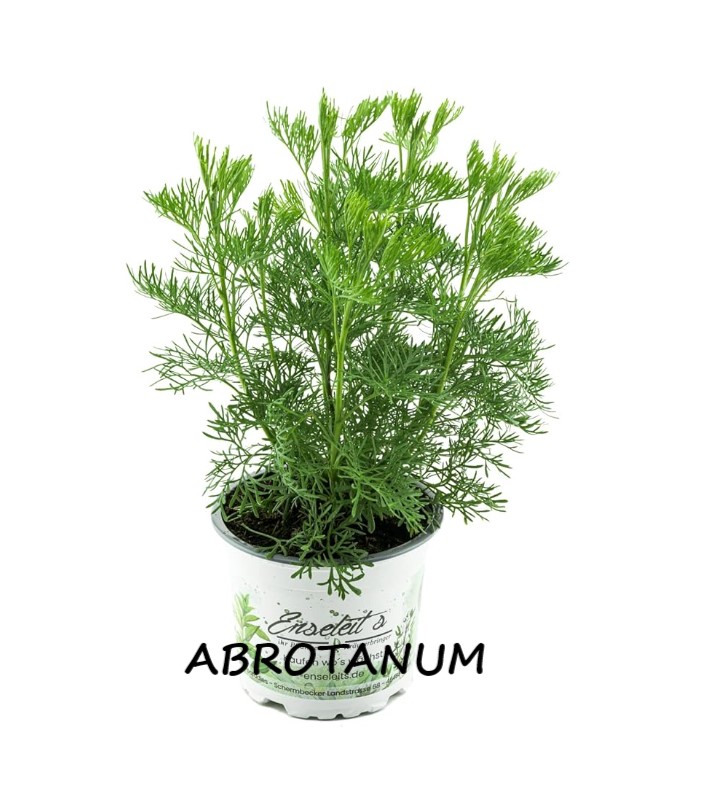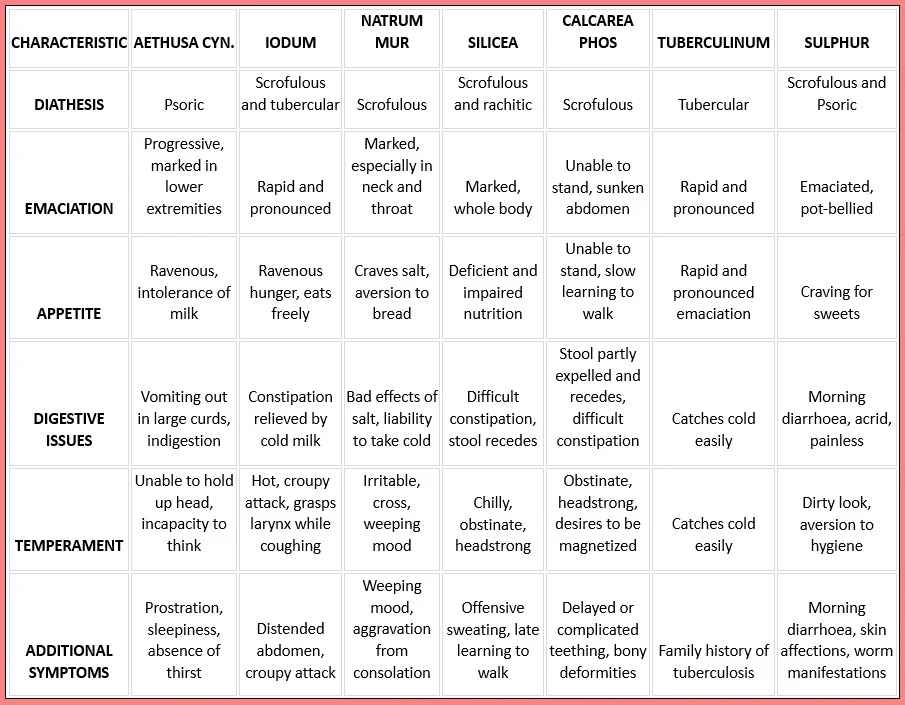Abrotanum is a valuable medicine obtained from plants in the vegetable kingdom.
Its mother tincture is made from fresh leaves of the plant, which primarily grows in Southern Europe.
It is commonly used for treating conditions like marasmus in children and rheumatism triggered by suppressed diarrhoea or other bodily secretions.
Abrotanum exhibits prominent alternating actions, making it unique among drugs.
Table of Contents
ToggleSOURCE INFORMATION
- Scientific Name: Artemisia abrotanum
- Common Names: Southernwood, Lad’s Love, Southern Wormwood
- Family: Asteraceae
- Kingdom: Plantae
- Order: Asterales
- Native Range: Eurasia and Africa
- Naturalized Locations: Scattered locations in North America

CLINICAL APPLICATIONS
Abrotanum is beneficial in treating various conditions such as chilblains, gout, haemorrhoids, hectic fever, hydrocele, indigestion, lientery, marasmus, pleurisy, and rheumatism.
It has been found effective in addressing issues related to the umbilicus, including oozing.
SPHERES OF ACTION
The primary areas of action for Abrotanum include the gastrointestinal tract, nerves, mind, fibrous tissue, and serous membrane.
PATHOGENESIS
Abrotanum’s impact on the gastrointestinal system leads to disrupted digestion, flawed assimilation, compromised nutrition, lientery (undigested food particles in the stool), and abdominal distension, resulting in progressive emaciation and marasmus.
Its effect on fibrous tissue gives rise to rheumatic and gouty manifestations, while its influence on the serous membrane can lead to conditions like pleurisy and hydrocele.
CONSTITUTION
- The typical patient profile is a child who exhibits marked emaciation, especially in the lower extremities.
- Facial characteristics include an aged appearance, with a pale and wrinkled face. The skin is flabby, hanging loosely in folds.
- The child’s head is weak, making it difficult to hold up.
WHAT IS CONSTITUTION IN HOMOEOPATHY?
TEMPERAMENT
- Patients tend to display a cruel and inhuman temperament.
WHAT IS TEMPERAMENTS IN HOMOEOPATHY?
DIATHESIS
- The prevalent diathesis is the tubercular diathesis.
WHAT IS DIATHESIS IN HOMOEOPATHY?
RELATION WITH HEAT AND COLD
- Abrotanum is associated with a chilly disposition.
MIASM
- The underlying miasmatic influence is Psora, which is considered in the background of all the troubles associated with Abrotanum.
Did you know?
- Abrotanum, derived from the plant Artemisia abrotanum, has a rich historical significance. Ancient civilizations, including the Greeks and Romans, valued this herb for its medicinal properties and believed it to have protective qualities. The name “Southernwood” hints at its origins in Southern Europe, where it was extensively used.
GUIDING SYMPTOMS OF ABROTANUM
- Great Progressive Wasting
- Particularly evident in the lower extremities.
- Ravenous Appetite
- Despite eating well, there is a significant loss of flesh, a characteristic shared with lod, Nat.mur, Sanic, and Tub.
- Lientery
- Stool contains undigested food particles, and there is an alternation between diarrhea and constipation. Comparable to Ant.c, Nux.v, Sulph, Verat.alb, Ant.t, Podo, and Chelid.
- Rheumatic Conditions
- Manifestations include heart irritation, epistaxis, bloody urine, anxiety, and trembling.
- Rheumatism is present without swelling, while gout exhibits swelling and inflammation.
- Rheumatism alternates with haemorrhoids and dysentery, resembling symptoms seen with Kali bich.
- Hydrocele in Children
- Characterized by the oozing of blood and moisture from the navel of newborns, like symptoms observed with Calc.phos.
- In the case of urine-related issues, it aligns with symptoms seen in Hyos.
- Angioma of the Face
- Presence of angioma (a benign tumor made up of small blood vessels) on the face.
- Mind
- The patient exhibits cruel tendencies, constantly desiring to do something cruel.
- Displays irritability, ill-natured behavior, violence, inhumanity, crossness, and despondency.
- Accompanied by an incapacity to think.
- Aliments From
- Symptoms arise from the sudden cessation of diarrhea or other secretions.
- Resulting in malnutrition, defective digestion, and absorption issues.
DETAILED ORGAN SYMPTOMS
MARASMUS
Causation
- Results from impaired nutrition, defective digestion, and imperfect assimilation and absorption.
Character
- Progressive marasmus in children, marked by significant emaciation in the lower extremities.
- The child is very weak, unable to hold up the head, and experiences disturbed digestion.
Concomitants
- Presents with a ravenous appetite, but despite eating well, there’s pronounced and ongoing emaciation.
- Accompanied by great weakness, prostration, and a kind of hectic fever.
- Lienteric stool is common, and the child may suffer from alternate obstinate constipation and diarrhoea.
- The baby exhibits chilliness, mental irritability, and ill-natured behavior.
Morning diarrhoea, skin affections, and worm manifestations with intense craving for sweets are common in such children.
COMPARISION WITH OTHER REMEDIES IN MARASMUS
- AETHUSA CYN
- Indicated in acute attacks of the baby during summer and dentition.
- Intolerance of milk, leading to vomiting in large curds.
- Weakness, prostration, and sleepiness with absence of thirst.
- IODIUM
- Hottest baby with scrofulous and tubercular diathesis.
- Profound debility and emaciation of the whole body.
- Ravenous hunger, distended abdomen, and croupy attacks.
- NATRUM MUR
- Anaemic and cachectic baby with emaciation.
- Craving for salt but aversion to bread.
- Liability to take cold, irritability, and weeping mood.
- SILICEA
- Chilly baby with deficient nutrition and impaired assimilation.
- Scrofulous and rachitic child with late dentition.
- Obstinate constipation, desire to be magnetized.
- CALCAREA PHOS
- Anaemic and emaciated child with scrofulous diathesis.
- Delayed teething, open fontanelles, and bony deformities.
- Inability to stand and weak spine.
- TUBERCULINUM
- Physically weak with rapid and pronounced emaciation.
- Catches cold easily, tubercular diathesis.
- Family history of tubercular affection.
- SULPHUR
- Hot and psoric baby with scrofulous diathesis.
- Emaciated and pot-bellied with a filthy look.
- Aversion to washing, morning diarrhoea, skin affections.

Note: The mentioned symptoms and comparisons are characteristic of each remedy in the context of marasmus. Individual cases may vary, and professional homeopathic advice is recommended.
RHEUMATISM AND GOUT
Causation
- Rheumatic affections are triggered by suddenly checked diarrhoea or other secretions.
Character of pain
In rheumatic affections
- Excessive pain is experienced.
- There is no swelling observed.
Character of pain
In gout
- Joints are inflamed, swollen, and stiff.
- Pain is very intense with a pricking sensation.
- Particularly, ankle joints and wrists are highly inflamed and painful.
- Overall, the affected areas feel very lame and sore.
Modalities
- Aggravation: At night and from cold.
- Amelioration: By motion.
CONCOMITANTS
- Painful contraction of limbs from cramps or after colic is observed.
- Metastasis of rheumatism to the heart is a frequent phenomenon.
- High fever accompanies rheumatic attacks.
- Rheumatism may alternate with heart irritation, epistaxis, bloody urine, anxiety, and trembling.
- Suppressed rheumatism of any joint followed by violent cardiac symptoms calls for Abrotanum.
ABROTANUM IN SPECIFIC CONDITIONS
- Abrotanum is considered in itching chilblains.
- It may be of immense assistance in pleurisy after Aconite and Bryonia.
- A pressing sensation remains in the affected side, impeding respiration.
- Other symptoms of pleurisy include an evening rise of temperature, nocturnal sweating, and great susceptibility to catching cold.
GENERAL MODALITIES
- Aggravation: At night and from cold.
- Amelioration: By motion.
RELATIONS AND COMPARISONS
- It can be compared with Nux vomica and Agaricus in chilblains.
- Bryonia and Baryta carb follow Abrotanum well.
- In pleurisy, after Aconite and Bryonia, Abrotanum is also effective.
FREQUENTLY ASKED QUESTIONS (FAQS) ABOUT ABROTANUM
- What is Abrotanum used for in traditional medicine?
- Abrotanum has been traditionally used to address conditions such as marasmus in children, rheumatism, and digestive issues triggered by suppressed secretions.
- How is Abrotanum prepared for medicinal use?
- The mother tincture of Abrotanum is prepared from fresh leaves of the Artemisia abrotanum plant.
- This tincture is the basis for various homeopathic remedies.
- What sets Abrotanum apart from other medicines in homeopathy?
- Abrotanum is unique for its alternating actions, making it versatile in treating conditions with alternating symptoms, such as lientery (alternating diarrhoea and constipation) and rheumatic manifestations.
- Can Abrotanum be used for skin issues?
- Yes, Abrotanum is considered in cases of itching chilblains.
- It may also assist in addressing skin-related symptoms in certain conditions.
- What is the constitution of a typical Abrotanum patient?
- The typical patient profile is a child with marked emaciation, especially in the lower extremities.
- The child may exhibit a pale and wrinkled face, flabby skin, and weakness in holding up the head.
- What is the temperament of individuals requiring Abrotanum?
- Patients tend to display a cruel and inhuman temperament. Irritability, violence, and despondency are common mental symptoms.
- Is Abrotanum associated with a specific miasm?
- Yes, the underlying Miasmatic influence is Psora, considered in the background of all the troubles associated with Abrotanum.
- What are the primary areas of action for Abrotanum in the body?
- Abrotanum primarily acts on the gastrointestinal tract, nerves, mind, fibrous tissue, and serous membrane, leading to its diverse clinical applications.
SUMMARY
Abrotanum is characterized by progressive wasting, ravenous appetite despite flesh loss, lientery with alternating bowel habits, rheumatic conditions alternating with other issues, hydrocele in children, angioma on the face, and a mind displaying cruelty, irritability, and incapacity to think.
Symptoms arise from the sudden cessation of secretions, leading to malnutrition and digestive problems.
